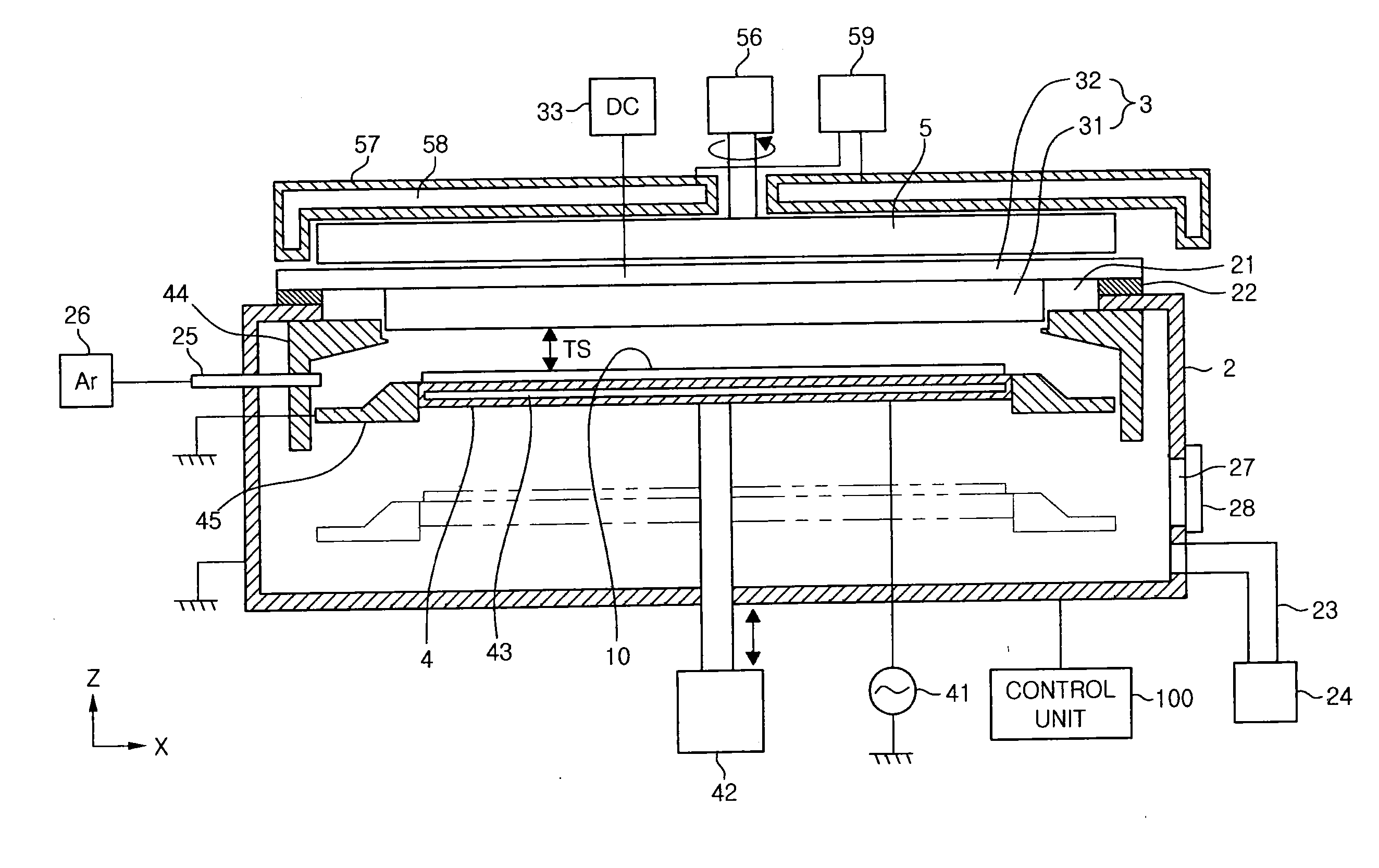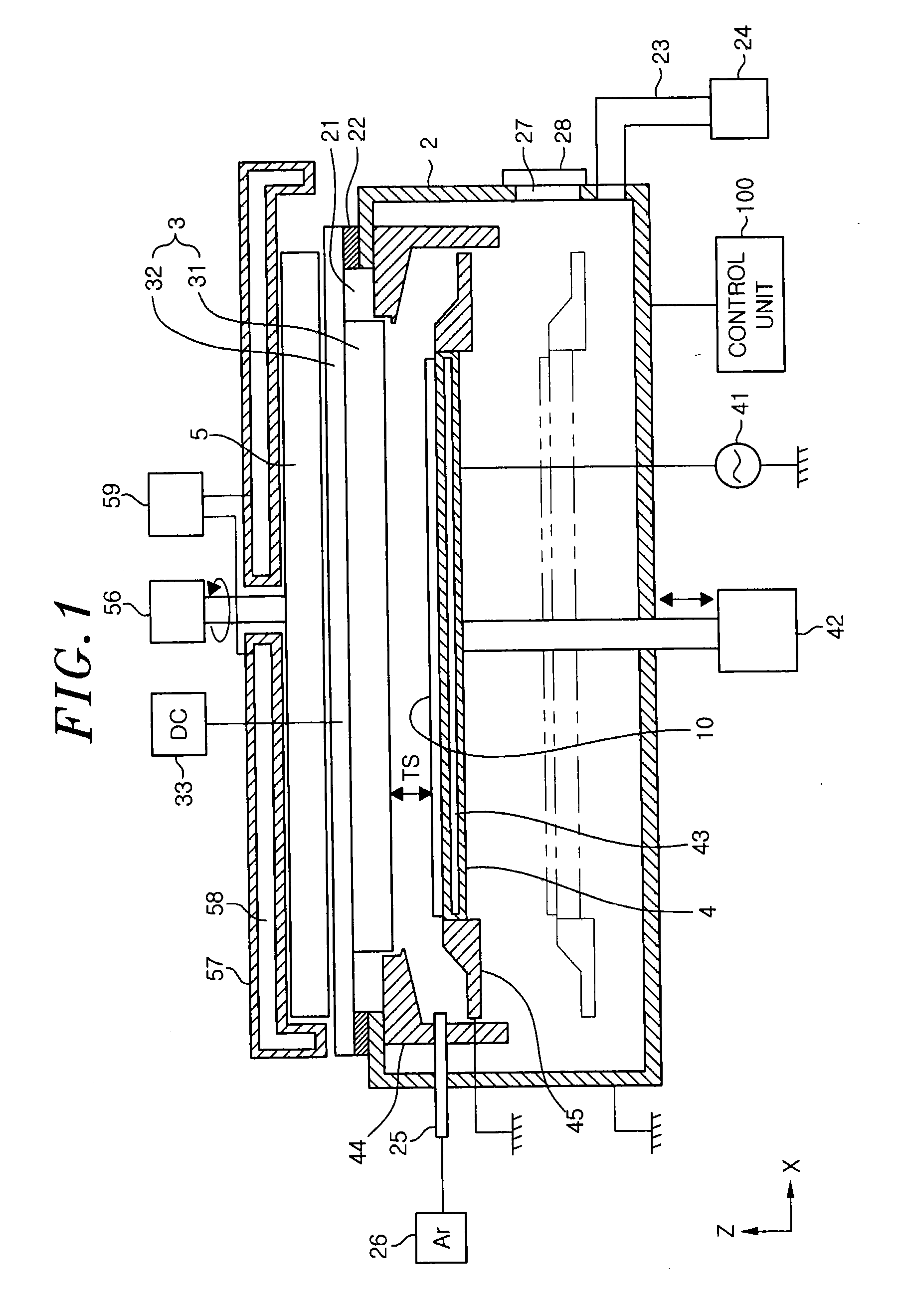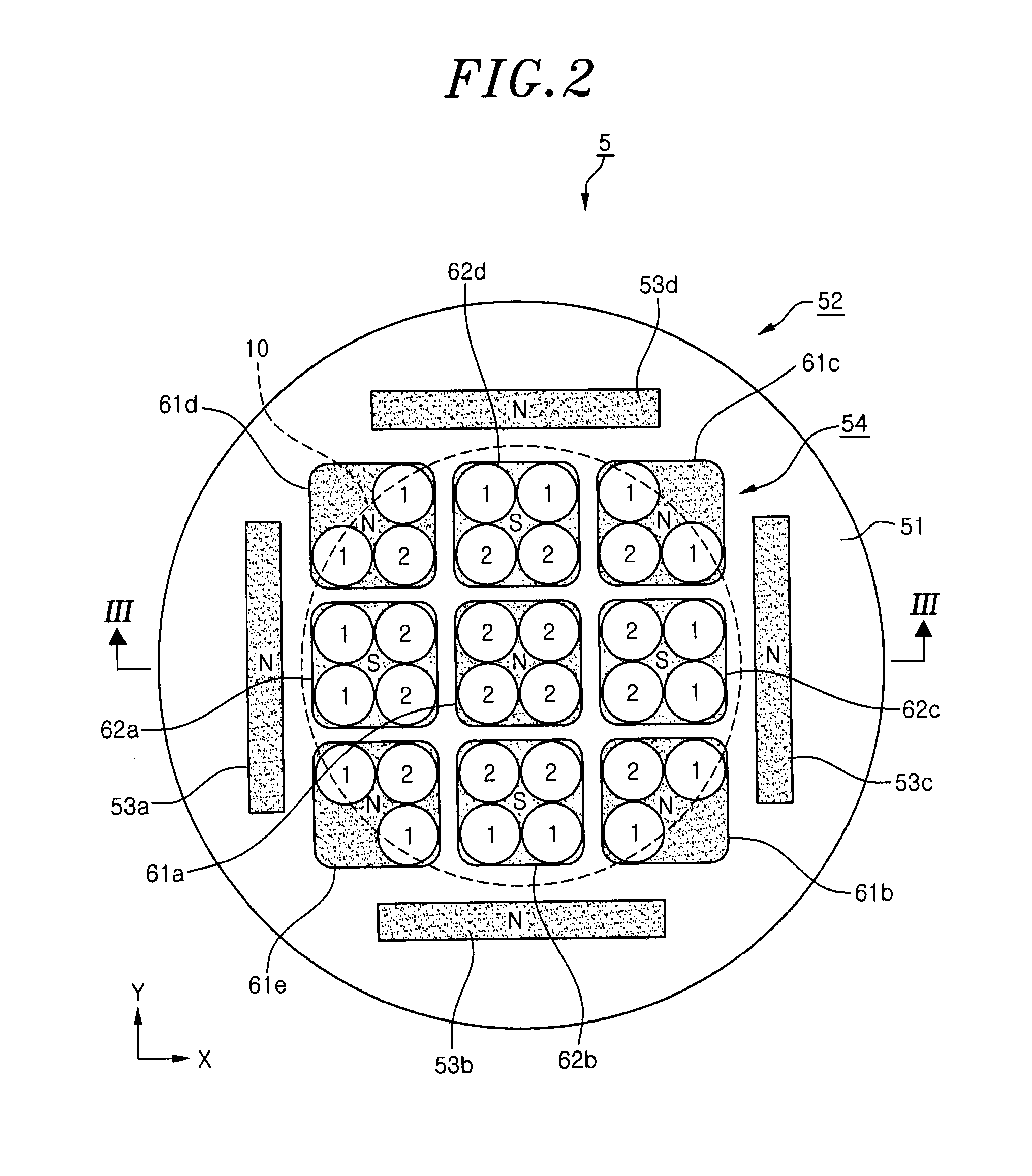Magnetron sputtering apparatus and method
a sputtering apparatus and sputtering technology, applied in the direction of electrolysis components, vacuum evaporation coatings, coatings, etc., can solve the problems of difficult uniform formation of erosion b, low deposition efficiency as about 10%, and inability to obtain high deposition rate, so as to improve the deposition efficiency and the utilization efficiency of a target, the effect of low resistance film
- Summary
- Abstract
- Description
- Claims
- Application Information
AI Technical Summary
Benefits of technology
Problems solved by technology
Method used
Image
Examples
example 1
[0177]In the magnetron sputtering apparatus including the magnet array body 511 of FIG. 11, a deposition process was carried out under the processing conditions described above, and the evaluation of the relationship between the current density and the DC voltage applied to the target electrode 3 was conducted. At this time, the distance between the target 31 and the wafer 10 was set to 30 mm. Further, a configuration (Comparative Example 1) in which the return magnets 531 are not provided in the magnet array body 511, a configuration (Comparative Example 2) using the conventional magnetron sputtering apparatus shown in FIG. 23, and a configuration (Comparative Example 3) in which the discharge is performed by applying a DC voltage without using magnets were also evaluated in the same manner.
[0178]FIG. 16 shows the results. In FIG. 16, the horizontal axis represents the DC voltage applied to the target electrode 3, and the vertical axis represents the current density between the waf...
example 2
[0180]In the magnetron sputtering apparatus including the magnet array body 5 of FIG. 2, a deposition process was carried out under the processing conditions described above without rotating the magnet array body 5, and the deposition rate distribution in the radial direction of the wafer was obtained. Also in the case where the magnet array body 5A of FIG. 10 is provided instead of the magnet array body 5 of FIG. 2, the deposition rate was measured in the same manner. The results for the configuration in which the magnet array body 5 is provided are shown in FIG. 17, and the results for the configuration in which the magnet array body 5A is provided are shown in FIG. 18.
[0181]Here, a difference between the magnet array body 5 and the magnet array body 5A is only the number of the magnet elements 63 constituting the magnets 61 and 62. However, by adjusting the number of the magnet elements 63, it was observed that the deposition rate distribution in the radial direction of the wafer...
example 3
[0184]In the magnetron sputtering apparatus including the magnet array body 5 of FIG. 2, the distance between the target 31 and the wafer 10 was set to 20 mm, and a deposition process was carried out under the processing conditions described above without rotating the magnet array body 5 to obtain the deposition rate distribution in the radial direction of the wafer. Also in the case where the distance between the target 31 and the wafer 10 was set to 50 mm, the deposition rate was measured in the same manner. The results are shown in FIG. 19 along with the array of the magnet group 52 of the magnet array body 5 and the state of the erosion of the target 31. Further, in Example 3, the target 31 larger than the magnet group 52 of the magnet array body 5 was used.
[0185]Thus, it was observed that when the distance between the target 31 and the wafer 10 is 20 mm, the in-plane uniformity of the deposition rate is higher than that when the distance is 50 mm. Further, it was confirmed that...
PUM
| Property | Measurement | Unit |
|---|---|---|
| distance | aaaaa | aaaaa |
| diameter | aaaaa | aaaaa |
| diameter | aaaaa | aaaaa |
Abstract
Description
Claims
Application Information
 Login to View More
Login to View More - R&D
- Intellectual Property
- Life Sciences
- Materials
- Tech Scout
- Unparalleled Data Quality
- Higher Quality Content
- 60% Fewer Hallucinations
Browse by: Latest US Patents, China's latest patents, Technical Efficacy Thesaurus, Application Domain, Technology Topic, Popular Technical Reports.
© 2025 PatSnap. All rights reserved.Legal|Privacy policy|Modern Slavery Act Transparency Statement|Sitemap|About US| Contact US: help@patsnap.com



